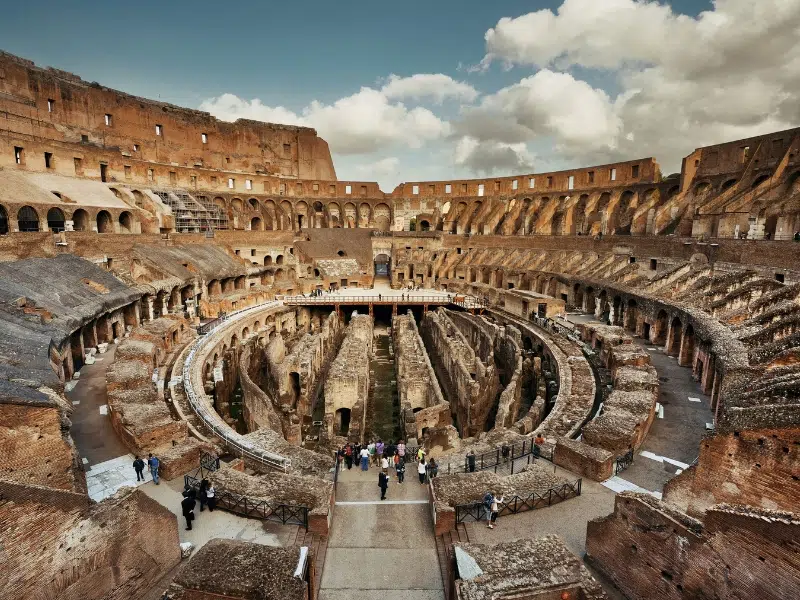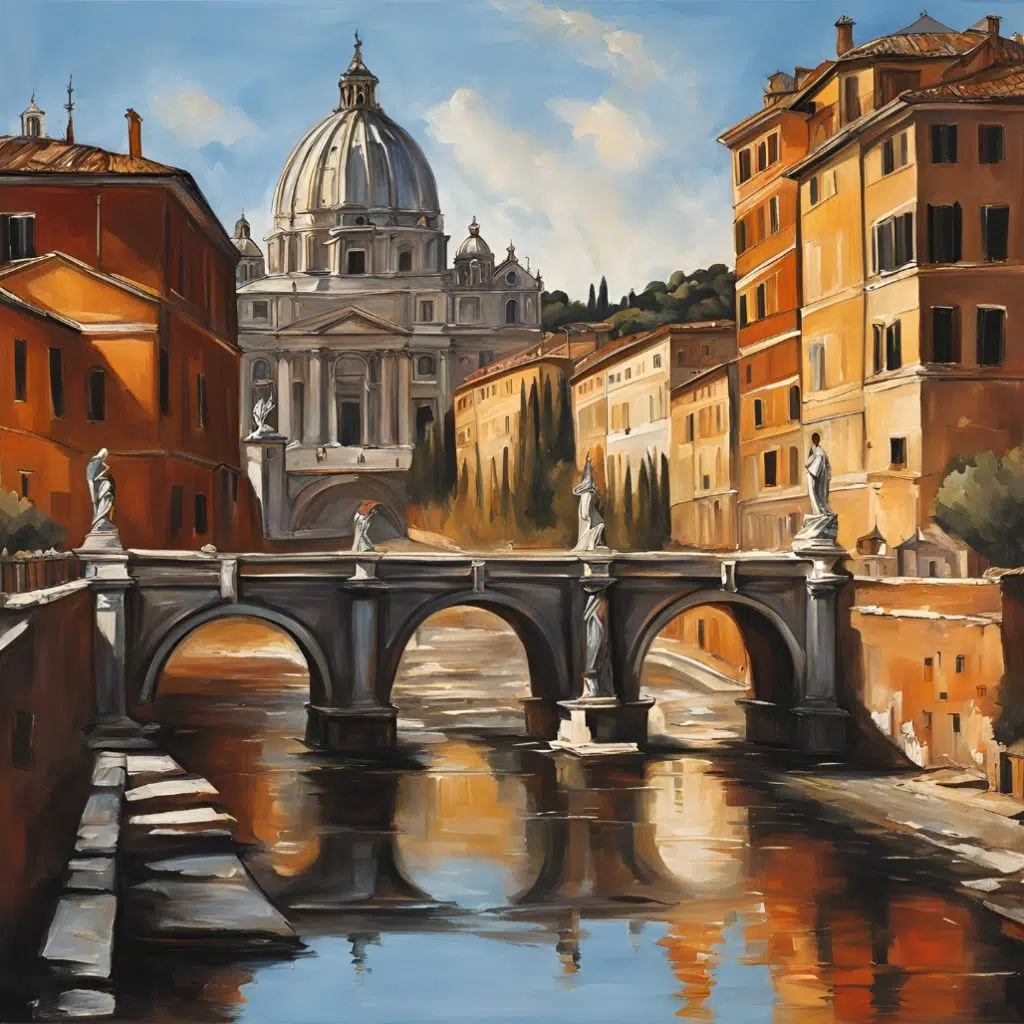
Table of Contents
The Colosseum, an iconic symbol of ancient Rome, stands as a testament to the grandeur and brutality of Roman civilization. This massive amphitheater, built between 70-80 AD, was a marvel of engineering and a testament to the Roman Empire’s power and control.
A Symbol of Flavian Power
Commissioned by Emperor Vespasian and completed by his son Titus, the Colosseum was not merely a building; it was a political statement. Built on the site of Nero’s artificial lake and gardens, the Flavian Amphitheatre, as it was originally known, was a deliberate act of erasure. By replacing the opulent and decadent excesses of Nero with a monument to public entertainment, the Flavian emperors sought to distance themselves from their predecessor and establish their own image as benevolent rulers who provided spectacles for the Roman people.
The construction itself was a monumental undertaking, requiring the mobilization of vast resources and the expertise of skilled engineers and architects. The Colosseum was built using travertine stone, volcanic tuff, and concrete, showcasing the Romans’ innovative use of building materials. The sheer scale of the project, employing thousands of workers, speaks to the immense power and resources of the Roman Empire.
A Stage for Spectacle
The Colosseum was designed to host a variety of spectacles, including gladiatorial contests, animal hunts (venationes), and mock sea battles (naumachiae). The elliptical structure, with its massive walls and intricate network of arches and vaults, could accommodate an estimated 50,000 to 80,000 spectators, offering a breathtaking spectacle of Roman engineering and architectural prowess.
The arena floor, a complex system of wood, sand, and machinery, was a marvel of Roman engineering. It could be flooded for naval battles or raised to accommodate various types of performances. Elaborate mechanisms, including elevators and trapdoors, allowed for the dramatic entrances and exits of animals and gladiators, adding to the spectacle and enhancing the excitement for the audience.

A Glimpse into Roman Society
The Colosseum provides a fascinating glimpse into Roman society and culture. Gladiatorial contests, while brutal, were a popular form of entertainment, reflecting Roman values of courage, strength, and discipline. The Colosseum also served as a venue for public executions and other forms of public spectacle, highlighting the power of the Roman state and its ability to control the lives of its citizens. These events, while often gruesome, served to reinforce social order and entertain the masses, solidifying the power of the Roman Empire.
An Enduring Legacy
Despite centuries of earthquakes, looting, and neglect, the Colosseum remains an awe-inspiring testament to the power and ingenuity of the Roman Empire. It continues to captivate visitors from around the world, offering a glimpse into the grandeur and brutality of ancient Rome. The Colosseum has also become a powerful symbol of Roman culture and a UNESCO World Heritage Site. Its image is recognized worldwide, serving as a reminder of Rome’s enduring legacy and its impact on Western civilization.
Visiting the Colosseum is an unforgettable experience. Standing within its massive walls, one can almost imagine the roar of the crowd, the thunder of hooves, and the clash of swords, offering a glimpse into the vibrant and often brutal world of ancient Rome.

Colosseum is part of Rome scavenger hunt and walking tour!
Embark on an unforgettable journey through the enchanting city of Rome with World City Trail. Our interactive walking tour combines the thrill of exploration with the rich history and culture of this beautiful city.
Key Features:
Interactive gameplay: Solve engaging puzzles and challenges as you explore the city.
Hidden gems: Uncover lesser-known spots.
Cultural insights: Learn about the city’s fascinating history.
Flexibility: Explore at your own pace and create your own itinerary.
Family friendly activity and a great way to explore the city!

Rome Scavenger Hunt and Self Guided Tour
Price Per Person
